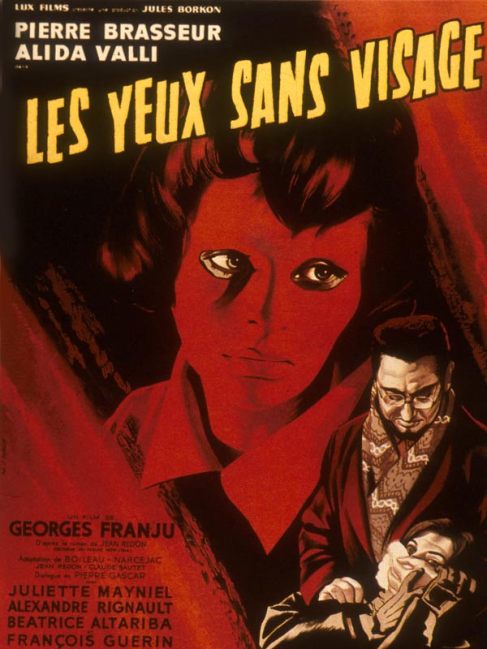“The skin of the face is that which stays most naked, most destitute. It is the most naked, though with a decent nudity. It is the most destitute also: there is an essential poverty in the face; the proof of this is that one tries to mask this poverty by putting on poses, by taking on a countenance. The face is exposed, menaced, as if inviting us to an act of violence. At the same time, the face is what forbids us to kill.” (Emmanuel Levinas: Ethics and Infinity, 85-86)
The next three screenings of the Philm Club will revolve around the question of how our face figures in our personal identity and in our relations with others. Beyond traditional oppositions of body and mind, the experience of a human face has become a major theme both in existential philosophy and phenomenology, as it seemed to elude all strict conceptual confines and become the most important “moment of encounter” as Emmanuel Levinas put it. Art in general, and films in particular have been very receptive to the problematic role that the human face plays in inter-personal relations, ethical norms, and emotional intelligence.
Tanin no kao (The Face of Another, Japan, 1966)
Director: Hiroshi Teshigahara
Writer: Kôbô Abe (book, screenplay)
Japanese with English subtitles, 122 min.
Screening: Friday, October 18, 6 P.M.
The Face of Another (1966) completes a trilogy of collaborations between novelist Kôbô Abe and director Hiroshi Teshigahara which included Pitfall (1962) and Woman in the Dunes (1964). It marks a change of scenery from the other films, to an urban environment that allows for a more overwhelmingly paranoid depiction of existential questions, as well as for meditations on the possibility of nuclear war. A man is badly injured in a work accident, his face destroyed and his sense of self shaking. A psychiatrist makes him a mask, copying the face of a random man (incidentally, the actor who played the miner in Pitfall, and who, even in that first film, had his face duplicated) and they start experimenting with the idea of being someone else, free of oneself and of moral standards that come from individuality. A subplot is inserted about a young woman, the right side of whose face is disfigured. She has been hurt by others’ inquisitive eyes and insults, and has been shunned by men. She asks her older brother, the only man who understands her pain and solitude, to make love to her, hiding from him the intent of killing herself after then. The urban context makes the story less allegorical and easier for contemporary viewers to relate to, while the sheer beauty and complexity of story and image touches upon philosophical depth rarely encountered on film.
Shi gan (Time, South Korea, 2006)
Director: Ki-duk Kim
Korean with English subtitles, 97 min.
Screening: Friday, October 25, 6 P.M.
Seh-hee and Ji-woo have dated for two years; jealousy consumes her. She worries he will tire of her face. Then, she disappears. Telling no one, she goes to a plastic surgeon for a new face. Ji-woo has no idea where she is, although when he does respond to other women, someone unseen intervenes. Then, he meets See-hee, and although he tells her he misses Seh-hee, this new relationship blossoms into love. They talk at the same coffee house, visit the same sculpture park, and pose for the same photographs he did with Seh-hee. We know they are the same woman. Has this new face and renewed love made her happy? And what will Ji-woo do when he learns the truth? Is losing face losing self?
Abre los ojos (Open Your Eyes, Spain, 1997)
Director: Alejandro Amenábar
Spanish with English subtitles, 117 min.
Screening: Friday, November 15, 6 P.M. ATTENTION, CHANGE OF DATE!
“Abre los Ojos” is an intriguing and fascinating thriller with a journey to paranoia. The twenty-five year-old genius Alejandro Amenábar wrote and directed this masterpiece that is certainly the source of inspiration of “The Matrix”, with the concept of virtual reality. The handsome and wealthy César (Eduardo Noriega) is very successful with women and is having difficulties to get rid off Nuria (Najwa Nimri) that is his last affair. His best friend is Pelayo (Fele Martínez), who is unlucky with women and jealous of his friend. On his birthday party, César meets the gorgeous and sexy Sofia (Penélope Cruz) that is dating Pelayo and they have a crush on each other and spend the night together in her apartment. On the next morning, César finds Nuria stalking him in front of Sofia’s building and he accepts her ride home. However, she commits suicide crashing her car against a wall and César survives the crash, but with his face completely destroyed. The doctors do not have technology to restore his face and César is absolutely depressed and missing Sofia. One night, César meets Sofia and Pelayo in a bar and he drinks too much, falling on the street. However, on the next morning, Sofia finds César on the street and kisses him telling that she loves him. Then the doctors tell him that they are able to fix his face. Out of the blue, César’s happiness changes and he finds that he is trapped in a nightmare.
All screenings will be in Zrinyi 14, room 412. Looking forward to encountering your face there!










